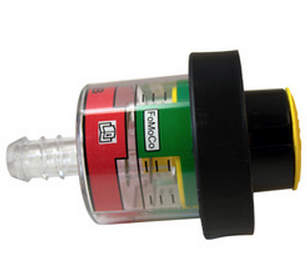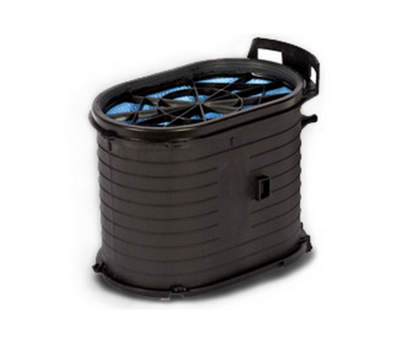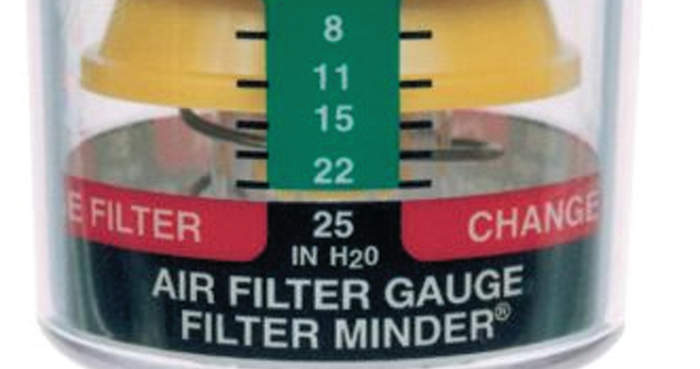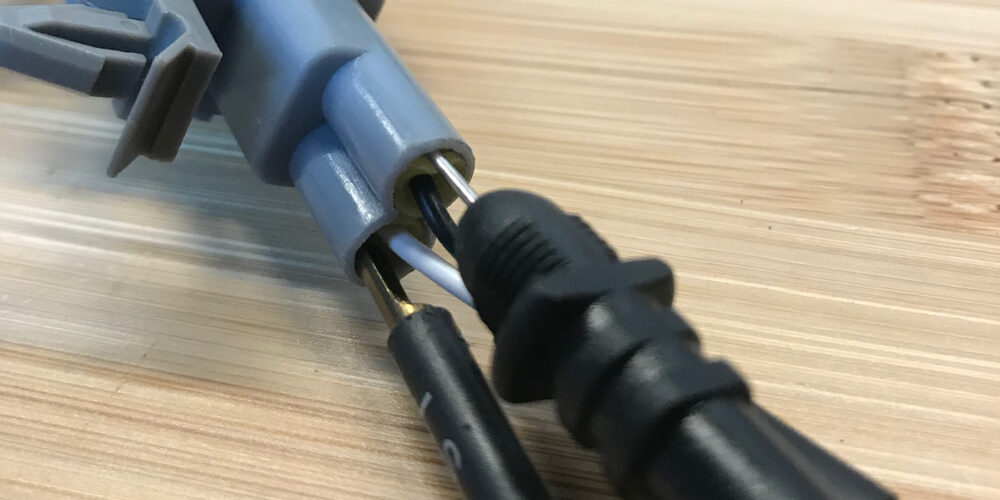Modern passenger and light-duty diesels with ECMs have mass airflow sensors and precisely control fuel delivery. Key to the efficiency and lifespan of the diesel engine is the diesel air filter. A restricted air filter will not affect fuel economy but will drastically affect power output. We asked prominent filter manufacturers for some diesel air filter replacement advice in order to keep these vehicles running as intended.
The Job of the Diesel Air Filter
Diesel engines have a certain level of differential pressure that needs to be maintained. This is the difference of the pressure drop between the airflow coming into the filter versus the pressure drop on the inner side of the element. As the differential pressure between the outside (dirty) portion of the filter element and the inner side increases, pressure builds on the outside of the element.
Going too far beyond the differential pressure specs will cause the filter to collapse inward and then open up the flood gates of contaminated airflow. The best way to avoid this is to monitor a restriction measuring device (gauge, pop-up indicator, dash light, etc.) and replace the element when it indicates the service point has been reached. Other indicators to look for include torn seal or filter media; distorted pleats or flutes; hardened or compressed seal; or elements packed with dust or similar contaminants.
 Watch The Pressure Gauge
Watch The Pressure Gauge
Engine manufacturer’s instructions should be followed relating to recommended replacement intervals, but always keep on an eye on the system’s pressure gauge for the real-time need for filter replacement.
The job of the pressure gauge is to measure the amount of vacuum between the filter and the engine. This takes guesswork out of the equation for both you and your customer. These filter elements should never be judged by appearances. Dirty-looking elements could still have plenty of life left, while restricted filters could look just fine. If your customer is unaware of the pressure gauge, it might make sense to show them and briefly explain its significance to best illustrate the need for filter replacement.
Gauges do not have a specific shelf life, but like anything else, they too can be damaged. Some gauges may indicate the highest restriction recorded, during full throttle as an example, and do not automatically reset to normal restriction levels. Broken, bent or damaged gauges could prevent a proper reading or reset, or, worst case, create a by-pass for dust to enter the clean air.
Soot from crankcase ventilation or congested city traffic can shorten filter life as well. High levels of soot often are the result of proximity of the intake to the exhaust, exhaust leaks near the air intake, vehicles operating in close quarters and operating in certain areas where exhaust concentrations are high.
Replacement Tips
Replacing and servicing the air filter for a diesel application requires more care than the air filters in your average gasoline engine. Lax replacement standards will likely introduce dust into the intake during the change process. As you’ll see, most recommendations for diesel air filter replacement revolve around limiting the possibilities that dust and dirt can enter the airflow and engine. Some diesel applications, especially those operating in a dirty or dusty environment, have a greater risk of dirt shaking loose in the housing during servicing. Cars with diesel engines subjected to city driving have similar service intervals as gasoline engines, while trucks or vehicles used in farm, construction, mines or dirt roads with high dust concentrations may require more frequent servicing.
 Before installation, inspect filters for dented liners or end caps that may lead to a loss of structural integrity and filter collapse. A warped or damaged air filter cover also cannot make a proper seal. Any sign of damage should move that filter to the discard pile. Some other elements to inspect include all clamps, flange joints and air cleaner mounting bolts. If any of these are not air tight, they will likely lead to leaks.
Before installation, inspect filters for dented liners or end caps that may lead to a loss of structural integrity and filter collapse. A warped or damaged air filter cover also cannot make a proper seal. Any sign of damage should move that filter to the discard pile. Some other elements to inspect include all clamps, flange joints and air cleaner mounting bolts. If any of these are not air tight, they will likely lead to leaks.
Remove diesel air filters as gently as possible. Not being careful here could accidentally jar dust and fragments loose and contaminate the clean side of the housing. Use a vacuum or a lightly oiled rag to assist. Do not reach into the clean side of the housing or duct.
Always be sure to clean the inside of the filter housing carefully. Use an inspection mirror to look at the clean air duct and connections. If a dust trail is observed, remove the duct and thoroughly clean. Use a clean, water-dampened cloth to wipe every surface clean. Make sure it’s clean and dry before putting in a new element.
Judging the effectiveness of the clamping system is your next priority, whether the system uses screws, clamps, latches or other types.
A poor gasket seal is one of the more common causes of engine contamination. If an application calls for a gasket seal, technicians must clean the gasket sealing surfaces of the filter housing to avoid any issues, and make sure any hardened dirt ridges are completely removed wherever filter gaskets contact the cleaner housing.
The fresh gasket should be highly compressible and spring back when pressed with your finger. The gasket also must seat evenly. Double check to make sure the sealing surface in the housing is clean and that the element is the correct model number.
In addition, if the clean air duct has to be removed to change the filter, make sure all connections are secure and properly reassembled. Be careful not to damage the filter gauge during servicing.
Due to the myriad ways dust and contaminants can be accidentally introduced into the intake during installation, many diesel applications will have a safety filter at the ready, just in case. Do not clean the safety element, but recommend replacement every two or three replacements of the primary filter.
One last thing!
Don’t be too quick to throw away that old filter. A pattern of debris on the filter element can indicate dust leakage or gasket sealing issues, and a technician will need to identify the cause.














